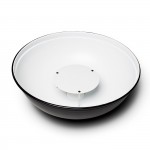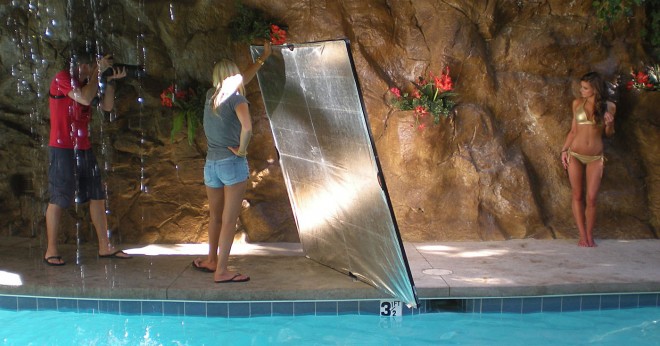Choosing the Right Tools | Joey Wright on Photography Gear
Most photographers can agree that walking into the local camera shop brings back that feeling we had as kids when we walked into a toy store. First, there’s the sense of awe as you take in the view of seemingly endless aisles filled with goodies. Then you enter a zombie-like trance as you slowly begin picking up every item from the shelf, staring at its package—but not actually reading it. “What is this? [Insert pause] I think I need this!” you tell yourself. By the time you’ve thoroughly examined and incorrectly replaced each item on the shelves of the first two aisles, you hear a voice over the intercom, “The store will be closing in 10 minutes. Please bring your final purchase to the cash register.” At this point, your buzz starts to wear off as you regain a budget-minded cognizance, realizing that the only thing you actually need is a lens cloth for the drool on your chin.
It’s easy to forget the difference between wanting and needing in all aspects of life. Infomercials understand this and try to exploit it whenever possible (usually at 3 a.m.). Do you really need a knife that can cut through a quarter? Understanding the difference between wanting and needing can become especially critical when making purchases for an expensive hobby or profession such as photography—where a couple unnecessary shopping sprees can keep your business from succeeding and your kids from going to college. On the other hand, let’s acknowledge that the right tools are necessary for creating images that will stand out in a world where you can’t walk down the street without bumping into a fellow photographer. So how do we decide when it’s time to purchase another tool for our toolkit?
Understanding the difference between wanting and needing can become especially critical when making purchases for an expensive hobby or profession such as photography.
Try thinking of each photography-related purchase as the solution to a problem. When pinpointing the problem becomes a problem itself, try reaching out to a friend or fellow photographer for some constructive criticism. Once you’ve figured out what it is you’d like to improve about your images, you can move along to the actual problem-solving stage. Here’s an example: If you’re having trouble achieving a soft portrait without blurring the subject’s face beyond recognition in postprocessing, try using a larger light source such as a softbox. As a photographer, you’ll face these types of problems on a regular basis. Oftentimes, the solution may be a new piece of equipment or a simple tweak using what you already own.
In this article, I’ll discuss three light-shaping tools that became solutions to my biggest lighting problems. The images shown in each section were created with the exclusive assistance of that particular tool (and available light). Before we get into the thick of things, here’s a quick disclaimer: The point of this article is not to suggest that any particular piece of equipment will automatically produce great photographs because at the end of the day, it’s not the arrow, it’s the Indian.
Beauty dish
When making the move into the high-output world of strobe lighting, every photographer is quickly faced with an overwhelming amount of choices when it comes to light modifiers. Before going out and buying every modifier available, ask yourself, “What is the look I’m trying to achieve?” As a kid, I was always inspired by the dramatic imagery found on my favorite movie posters, which I often used to wallpaper the actual wallpaper on my bedroom walls. Early in my photography, I set out to achieve a similar look in some of my location portraits, and after some trial and error, I found my first love in lighting: The beauty dish.
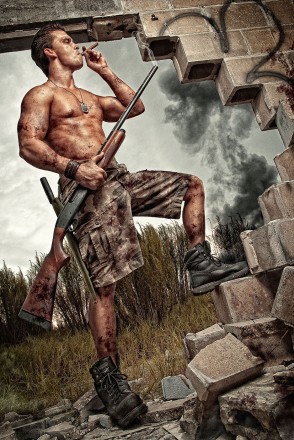
AlienBees AR800 strobe with beauty dish on boom off-camera upper right. 20mm, f/8 at 1/100. Joey Wright
The beauty dish is an excellent choice when looking for a combination of fairly soft shadows, punchy contrast, and compact physical size. Most lighting manufacturers offer a beauty dish in their product lineup at an affordable price, adding to its bang-for-the-buck factor. Don’t be fooled by its name either—just as “studio” lights can thrive in the great outdoors, the “beauty dish” shouldn’t be reserved for headshots to be used in shampoo ads. The dish can help you shape any look or style that calls for its well-balanced lighting characteristics.
Although it won’t give you the super-feathered shadows of a large softbox, a beauty dish won’t leave you with the harsh shadows and flat light cast by a small flash or bare strobe. Most beauty dishes are also designed to accept accessories such as a diffuser sock and a grid. Add a diffuser sock if you want a softer look with a bit less spread, essentially turning the dish into a small softbox. If the light from your dish is spilling onto too much of your scene, throw a grid on it to control the light’s direction.
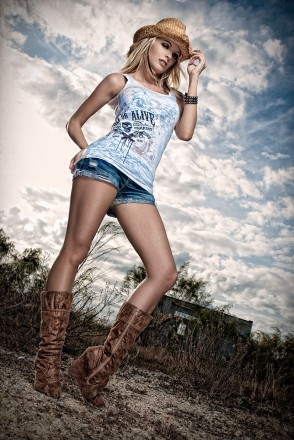
AlienBees AR800 strobe with beauty dish on boom off-camera upper right; second strobe on ground filling the shadow under the hat; backlit by sun. 20mm, f/13 at 1/200. Joey Wright
Compact size is another great advantage offered by the beauty dish. When working in a small space such as a home studio, a beauty dish can get nice and close to your subject without creeping into your shot. Shortening the gap between your light source and the subject will help avoid flat lighting by creating a shorter falloff thanks to the good ole’ inverse square law. If you’re not familiar with the inverse square law, a quick Google search ought to fill you in on the details. If you’d like to take things one step further, throw your beauty dish setup on a boom arm, thus allowing you to light your subject head-on while avoiding that pesky light stand from obstructing your shot. If you’re not quite sold on its usefulness, here’s one final suggestion for you: Let it serve as a substitute snack bowl after abandoning your Tupperware at the last potluck party you so kindly contributed to.
Ring flash
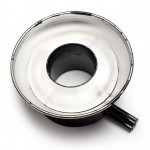
Light reveals and shadows define. That’s what I’ve been told before and I completely agree, but sometimes I prefer to reveal more and define less. If you’re looking for a way to add fill light to your subject without the conspicuous shadows defined by a typical off-camera flash, look no further than the ring flash. Although ring flashes come in many sizes, the shape is always the same.
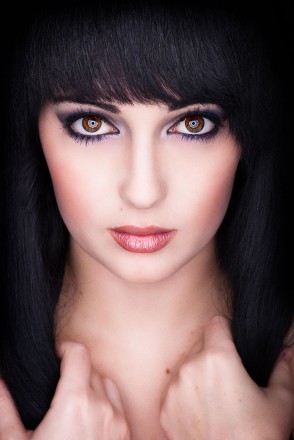
Shot through AlienBees ring flash with moon unit attachment. 50mm, f/8 at 1/200. credit: Joey Wright
The donut-shaped construction allows your lens to shoot through the absolute center of the light source, unlike a typical strobe or flash that must be placed off-camera. Shadows within your image are determined by the angle of your light source, and they become more prominant as your lights are placed further off-camera. Because the light from a ring flash originates from the same angle as the camera’s lens, shadows can be reduced to an absolute minimum while offering plenty of fill light. It’s also worth noting, for those who appreciate the finer details in life, the ring flash also creates an interesting ring-shaped catch light in your subject’s eyes.
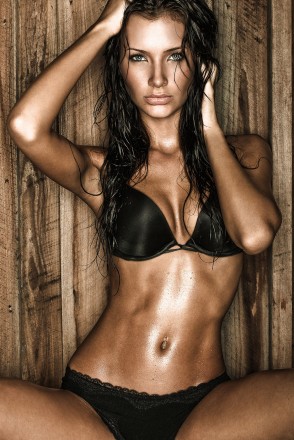
Shot through AlienBees ring flash at night with a 50mm lens 4′ from subject. f/8 at 1/200. credit Joey Wright
This versatility of the ring flash is where it really shines (pun intended). Although it can produce amazing results on its own, there’s no law stating that you must use the ring flash as your key light or even shoot through its center. When the shot doesn’t call for direct fill, feel free to slap it on a light stand or tripod and use it as another off-camera light source. Just think of the ring flash as the Swiss Army knife of your lighting arsenal: a tool you’ll want to take everywhere.
Most lighting manufacturers offer a ring flash solution along with attachments that can modify its light source. Again, you get more options adding to its functionality! If the $500–3,000 price tag of a dedicated ring flash is enough to make you cringe, you’ll be happy to know there are more affordable ring flash solutions that come in the form of slick attachments for your off-camera flash.
Scrim
When shooting on location, many photographers prefer the “all natural” look that can easily be offset by the use of flash. While the use of natural light may seem like an obvious and straightforward lighting solution, it does come with a few big challenges. Let’s face it; the sun throws a hefty amount of light our way without a dimmer switch. While it would be ideal to catch the breathtaking light offered at sunrise or sunset, not all shoots can be scheduled to fit within such a short window of opportunity. This leaves us with the roughly seven hours of the day in which we must find creative ways to shape or control the intense sunlight that so desperately tries to overexpose our subjects. The most flexible solution and my go-to piece of light-bending equipment is the trusty Scrim Jim from Westcott.
The Scrim Jim is a collapsible diffusion and reflection system that makes a great addition to any location shooter’s gear bag. Think of the scrim as the standard reflector’s bigger, tougher, and more versatile older brother.
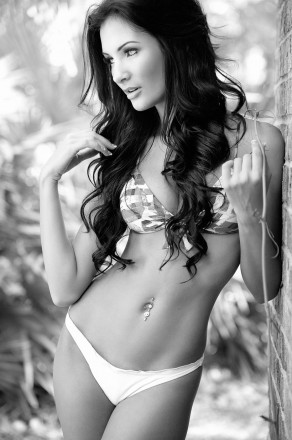
Large Westcott Scrim off-camera left bouncing available light at subject using reflective white material. credit Joey Wright
The aluminum frame of a Scrim Jim assembles into a square or rectangle shape with sides typically measuring anywhere between 42″ and 96″. Once assembled, the frame will accept a variety of fabrics including white/black cloth, gold/silver reflective material, and varying opacities of silk diffusion cloth. Although an assistant is the ideal solution to holding a scrim, a pair of clamps, grip heads, and light stands will do the trick.
Since it would take quite a few digital pages to discuss all of the scrim’s possible uses, let’s cover the most typical. Placing a scrim with silk diffusion cloth between your subject and the daystar is the equivalent of affixing a softbox to a bare strobe. The effect will be a reduced exposure on the subject and much softer shadows, which is often desired for flattering portraits.
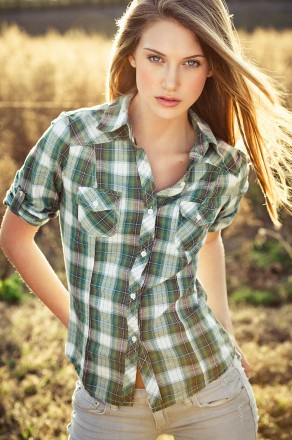
Backlit by sun with sunlight bouncing back at subject using Large Westcott Scrim with reflective white material. credit Joey Wright
You can produce a nicely backlit image by shooting with the sun behind your subject while bouncing light off of your scrim. In order to bounce light, you’ll want to attach the white or metallic reflective material. White reflective material will give you a subtle glow while any of the metallic materials will reflect a more directional and intense light. On those hotter days, the scrim can be used to provide the photographer and talent with much needed shade while cutting down on those unflattering farmers’ tans.
The tools don’t make the image

Backlit by sun with sunlight bouncing back at subject using Large Westcott Scrim with reflective white material
Figuring out which tools we actually need to survive will always remain a complex task that’s often misled by our desires, limited by our wallets, and frustrated by our inexperience. If a new piece of equipment will be critical for meeting a client’s expectations or turning your vision into reality (without depleting your kid’s college fund), you should probably consider it justified. Although I’m a huge buff for the latest and greatest gear, I try not to forget how much I loved photography when all I had was my first camera and a kit lens—because those are the only tools I truly need to make pictures. While our lighting tools play an important role in sculpting an image, let’s not forget that an interesting subject, great location, and good composition are the essential ingredients of the final product. Even with the right tools and ingredients, a true masterpiece still requires the hands of a great chef.
Joey was on Scott’s blog and shared these words, totally worth a read through. Or maybe you want to check out this interview he gave on Fstoppers. I also recommend this course by Bill Frakes on Lifestyle Photography.

